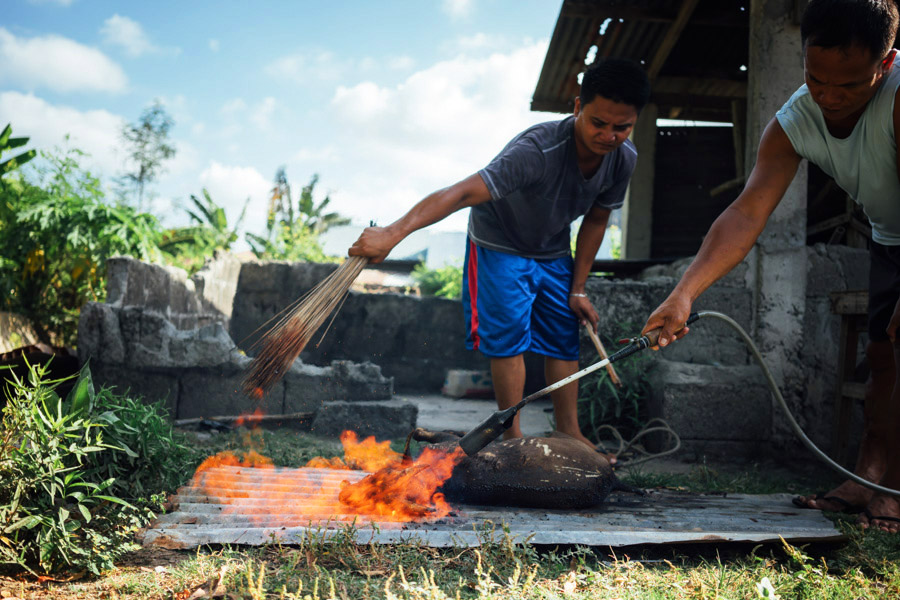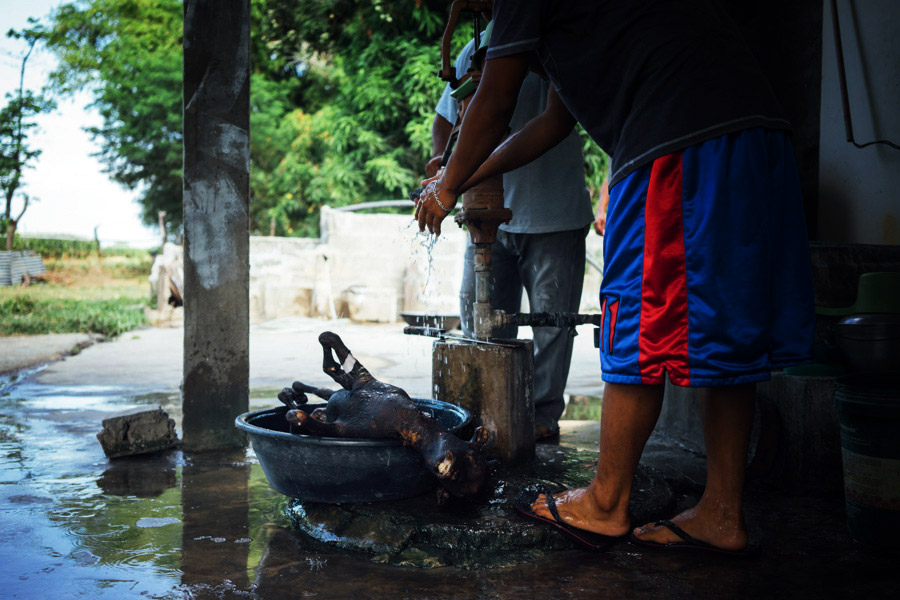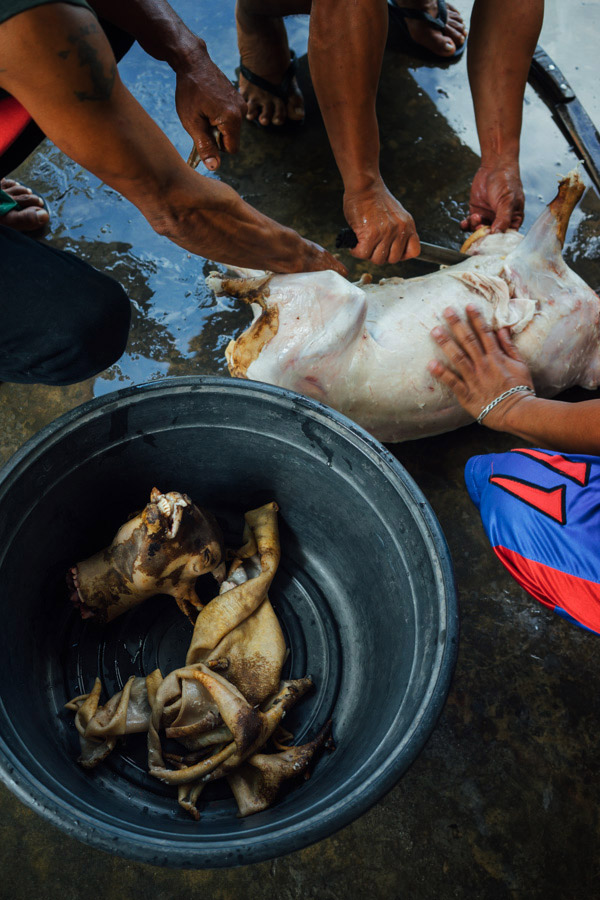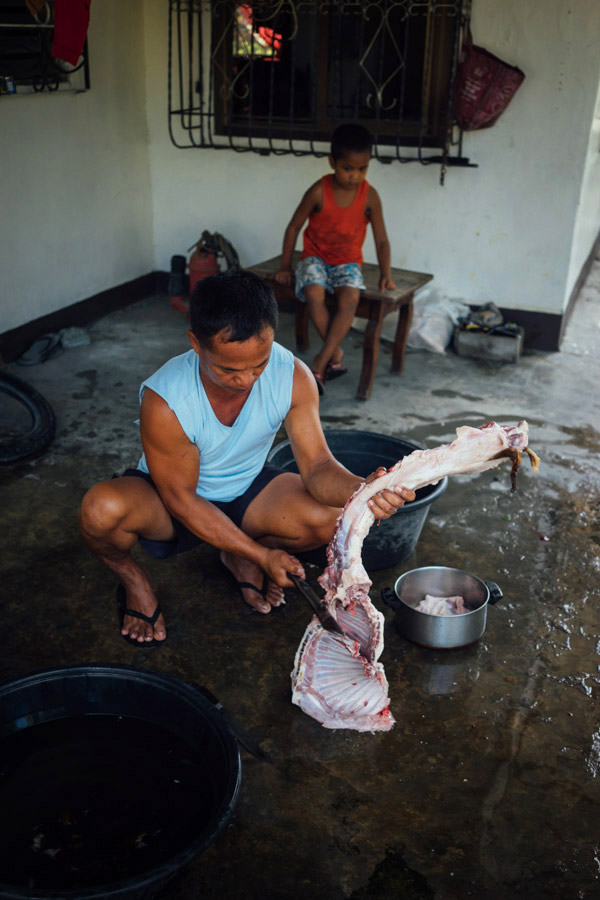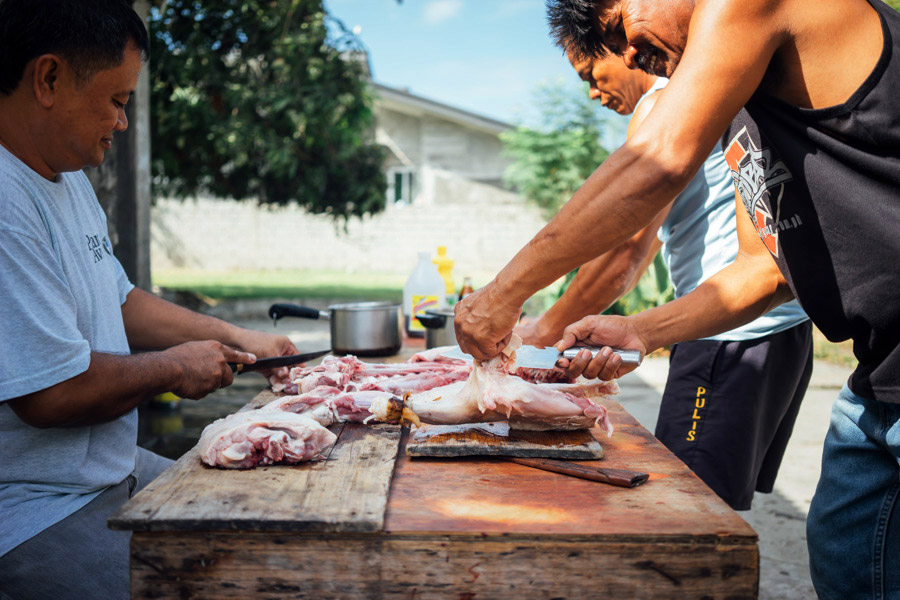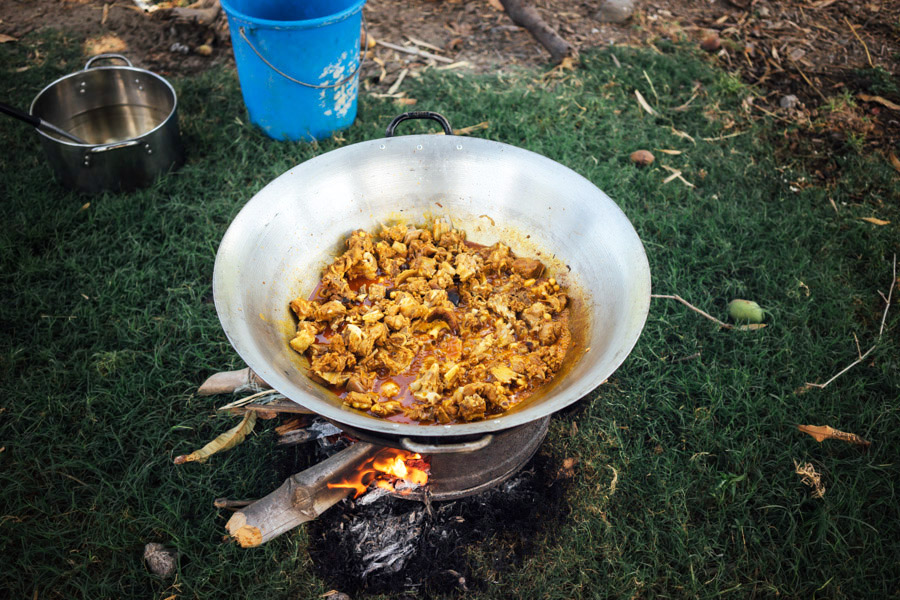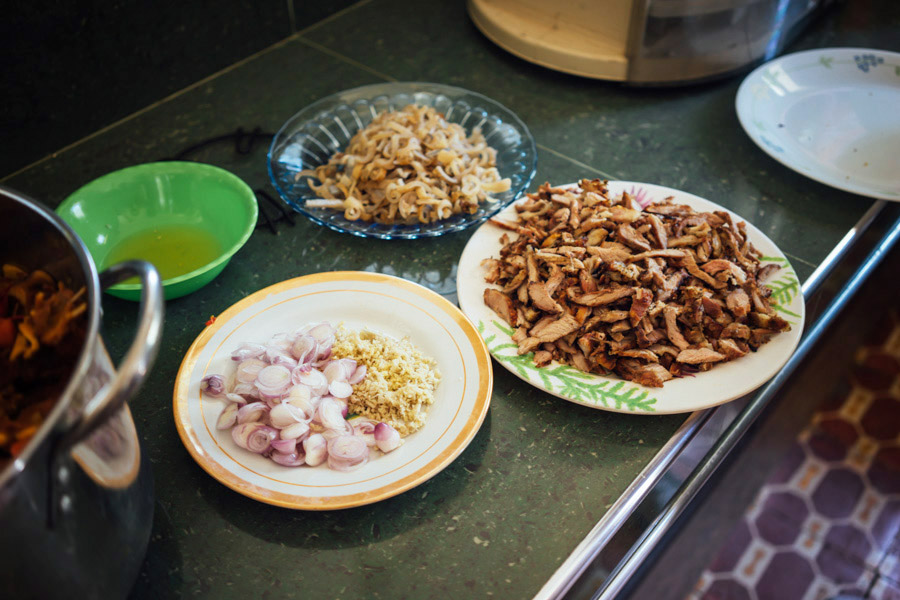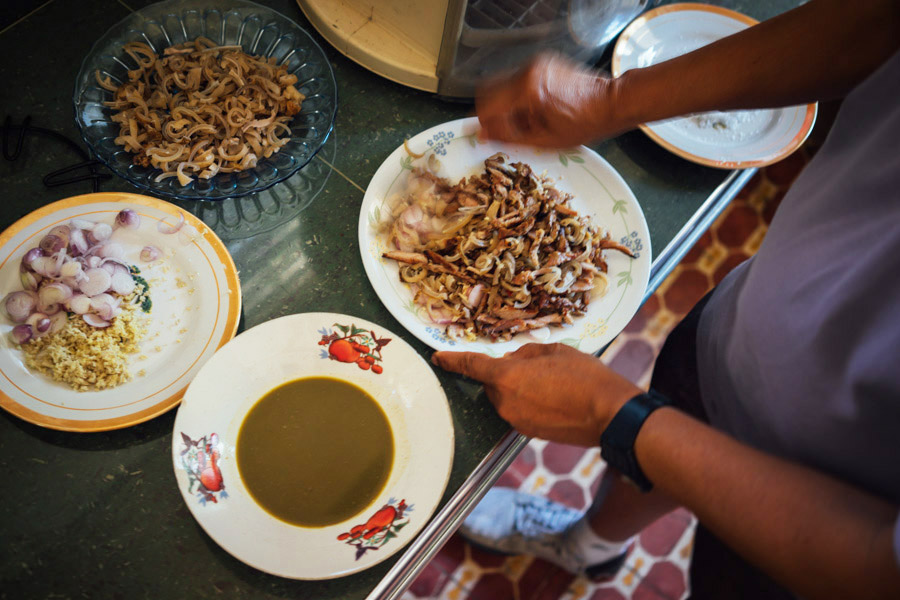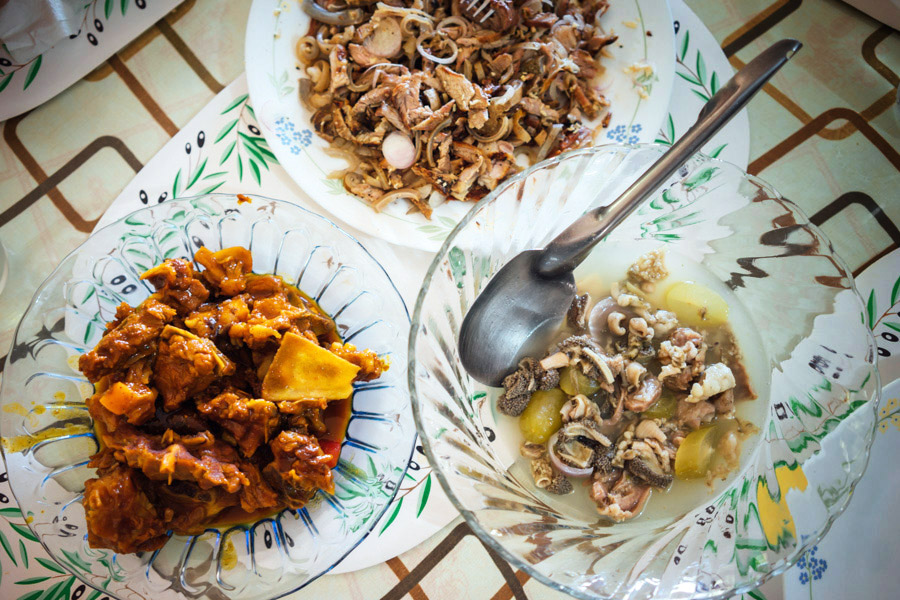Farm To Table: A Goat Story
An excerpt from THE PHILIPPINES PART 3 - THE FOOD & FARMLAND OF SANTA CATALINA.
NOTE: the PHOTos below are GRAPHIC. VIEWER DISCRETION IS ADVISED.
In the morning, my cousin John John (Auntie Jean’s oldest son) picks us up in a tricycle, and we speed down the 1.5 kilometers of road through the coastal croplands back to their house. This is where we watch our lunch being prepared from life to death to fire to table, over the next three hours.
First, my cousin Bryan unties the young animal, a mere two years in age and 40 kilograms in weight. The goat is laid on a makeshift wooden table, its mouth gently cupped shut. Without hesitation, my cousins and uncles skillfully puncture its carotid, draining all its blood as quickly as possible. The blood, of course, is saved for later. (We later learn that the main butcher we nicknamed “The Assassin” ironically has a PhD in Criminology.) I’m close to the action because I want to document it. Alex is about 30 feet away. I want to turn away, but I don’t, because I feel like I’m witnessing the animal leaving us peacefully. It’s okay to watch, I remind myself.
We follow the torching of the hair, the scrubbing and separating of the skin, the removing of the legs, horns, head, and innards, and then the cleaning of all the parts before they are made into proper dishes over bamboo fire pits and slow burning coals. The men take their time, gather over the fires, walk to the cornfields and back. There is no rush, nor is there waste. They honor the goat this way.








